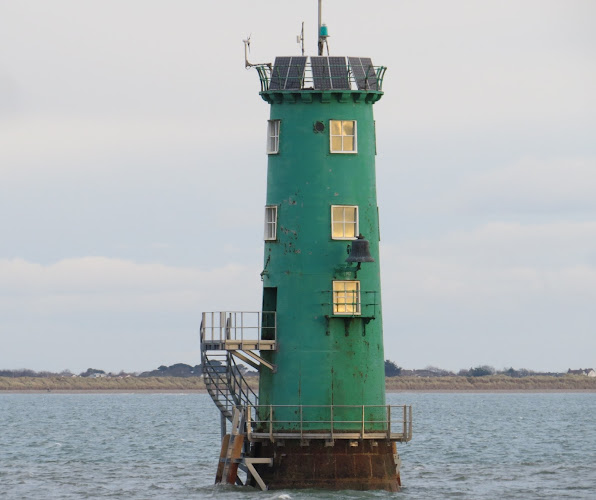Pictured above are Danny deVito and Arnold Schwarzenegger, twins separated at birth. Who?
Well, they are more commonly known as the Kilcredaun lighthouse in Carrigaholt, county Clare, on the northern shore of the Shannon estuary and the Haulbowline lighthouse at the entrance to Carlingford Lough.
Well, they are more commonly known as the Kilcredaun lighthouse in Carrigaholt, county Clare, on the northern shore of the Shannon estuary and the Haulbowline lighthouse at the entrance to Carlingford Lough.
The Kilcredaun light (spellings vary in the nineteenth century, making it somewhat tricky to research) is a relatively short tower of 43 feet, sitting on a headland overlooking the Shannon estuary, the light at a height of 133 feet above that majestic river. Until Tarbert was established in 1834, it was the only light on the Shannon with the exception of Loop Head. Until automation it was a one-family light. Sadly this beautiful light was discontinued in 2010.
The Haulbowline, or Carlingford Lough light is much more well known. Situated on a shallow island, that only shows at the very lowest tide, it replaced a less well-placed light at Cranfield Point on the mainland. The light shows at a focal plane of 101 feet.
Both lighthouses were designed and built by George Halpin senior. One was classed as a harbour light, the other as a sea light. Both are still standing proudly.
Haulbowline c.1906 National Library of Ireland
In actual fact, the lights were not twins, but triplets. The third child born that day was the Coningbeg Light Vessel (the Seagull) which took her place just south of the Great Saltee Island off the south Wexford coast. The longest-serving light vessel on our coastline, she served on her station until 2007 when she was replaced by a superbuoy.
I wonder which unveiling Halpin attended?
The reason I bring this up and link the events as 2024 approaches, is that they were all established on the same date - 1st September 2024 1824 - which means there are only eight months left to arrange the flamboyant 200th birthday parties, which may well include guided tours of the lighthouses, particularly for people whose forebears may have served at the light. Or indeed, for someone who might have brought this significant date to the attention of the authorities.























.png)



























